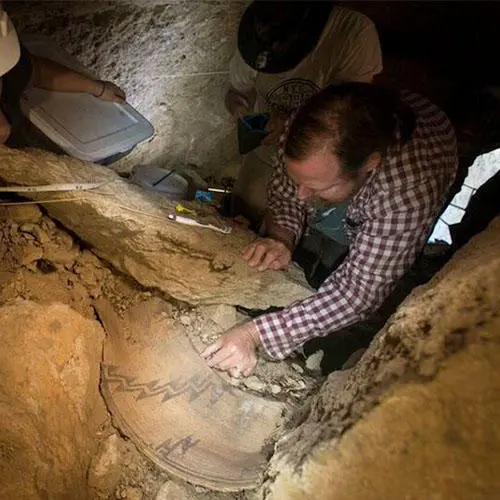Our research team has been helping Native American communities get closer to their ancestral heritage, using a range of modern technology and virtual reality.
Processes of colonialism have resulted in many Native American communities becoming disconnected from their deep prehistory and heritage.
Our research and archaeology teams have been working at two culturally important sites in California, on the Wind Wolves Preserve.
These sites include Pleito, a site of elaborately painted rock-art and Cache Cave, which contains elaborately hand-woven baskets and other objects created by their ancestors.
Native Californians are renowned for their spectacular multi-colour rock paintings and for developing the most sophisticated basketry technology in the world. The rock art site of Pleito is most elaborate painted sites, while Cache Cave has basketry spanning over 2000 years. Unfortunately, hundreds of similar sites have been looted through for over 100 years, so the recovery of the baskets from this cave was necessary to prevent a similar fate at Cache Cave.

Dr David Robinson’s research, along with our Computer Science course leader Brendan Cassidy, has created an immersive platform which means the cave can be explored remotely and that some of the fragile baskets can be handled in virtual reality (VR).
Additionally, Storylab – a training partnership including the University - has supported film making training for the Native Californians so they can produce their own cultural films.
These multi-media experiences are helping the local Tejon Indian Tribe to reconnect with their ancestry in creative ways, while helping our team learn from contemporary Native people. This information is contributing to the cultural education and events of the Tejon Indian Tribe as well as the landowners, the Wind Wolves Preserve.

